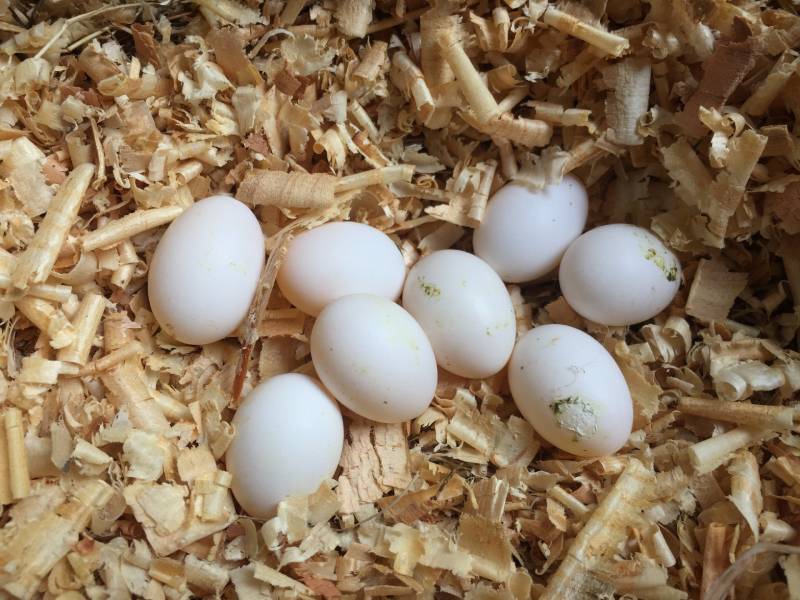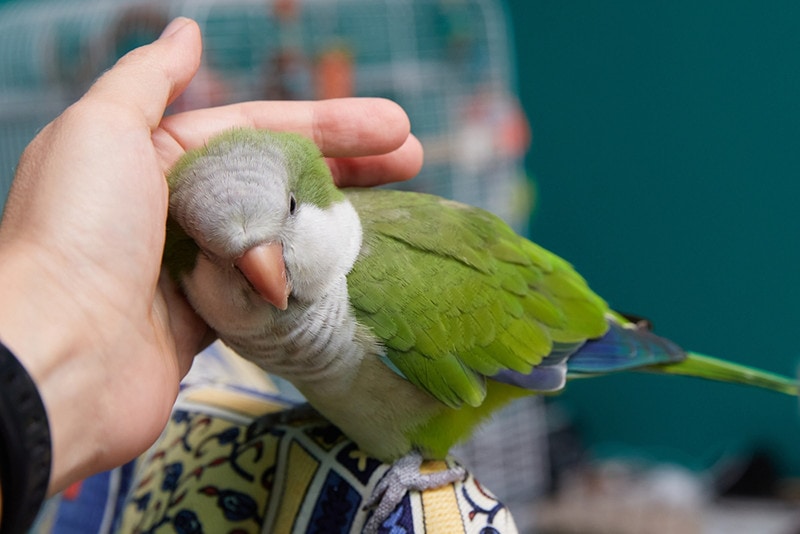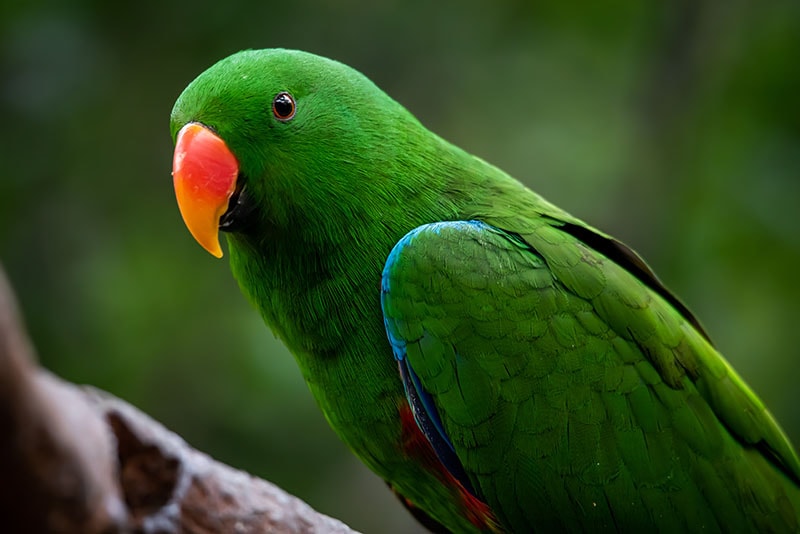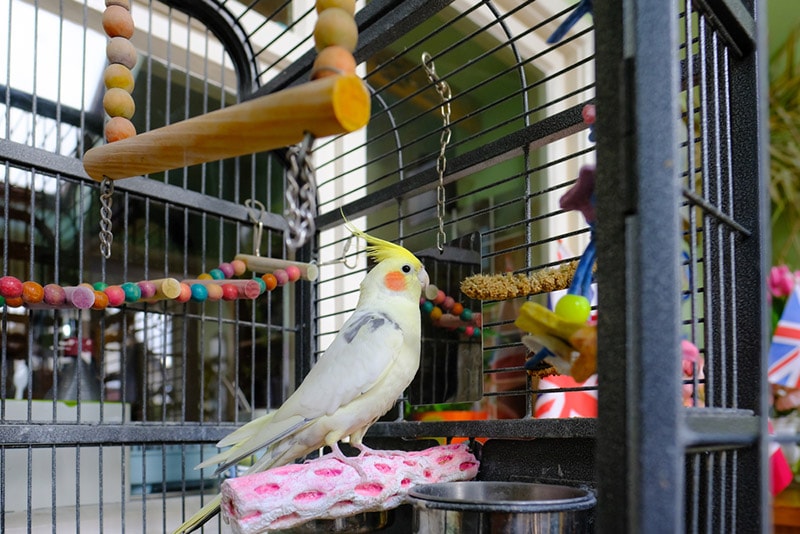How to Take Care of Parakeet Eggs: 10 Vet-Approved Tips
Updated on

If your female parakeet has been interacting with a male parakeet for several days in a quiet, undisturbed area, the chances for successful fertilization of her eggs are good. Like chickens, females often lay eggs without a male, but they do need a male in order to have chicks.
A batch of parakeet eggs is known as a clutch, and parakeets have approximately four to nine eggs per clutch. You will find your parakeet will lay one egg a day or an egg every other day until she has her full clutch in the nest. Incubation of these eggs takes around 17–20 days from the time each egg is laid. Note that just as she lays one egg at a time, eggs will also hatch one at a time.
So if your parakeet pairing has resulted in a nest full of eggs, you might be wondering how to take care of them? We have 10 tips below to help you, your parakeet, and all those eggs through this vulnerable and exciting time. Since there are so many parakeet species, this article will focus on the rose-ringed parakeet (Psittacula krameri).
The 10 Tips for Taking Care of Parakeet Eggs
It is imperative, especially if this is your first time dealing with a delicate breeding situation such as this, that you check in with your veterinarian or avian specialist for full and complete advice, particularly regarding nutrition. Birds are sensitive creatures, and gaining expert and tailored information specifically for you and your bird is vital, as every parakeet and circumstance is different.
For the most part, your parakeet hen will do most of the heavy lifting in terms of looking after and nurturing the eggs, but it is up to us to make sure we are providing her with the right environment and support to do this. Here are 10 tips to help guide you along the way.
1. Provide a Suitable Nesting Environment
You should already have a good sized cage that allows your parakeets space to stretch their wings and move about freely, and if you are hoping to see some parakeet chicks, it is important that you have provided your birds with a suitable space to lay their eggs. Although it is not unheard of for a parakeet to lay an egg on the floor of a cage if no nesting box has been provided, this is usually only the case of unfertilized eggs.
Your nesting box should be tucked away in a quiet corner; small enough to feel safe and cozy, but large enough to accommodate a growing brood of chicks. The box should have a ledge and a rail or perches to allow the fledglings to venture out when ready.
You can place some nesting material inside the box, but it is also a good idea to leave some options on the ground for them to select and place themselves. Shredded newspaper and grass nesting material are ideal. Parakeets tend to be minimalist nest builders.

2. Carefully Observe
Be respectful and limit the amount of nest checks you make. Rose-ringed parakeets are very capable creatures and tend to know what they are doing, and any busybodies being around can upset them, or worse, they can see you as a threat.
You do need to check periodically to ensure mom and her eggs are safe and well, but don’t over-interfere or disturb the parents or their eggs. Any of these factors can cause unnecessary stress for your mama bird and subsequent young, which in turn can have negative effects on their health.
Some breeders set up small cameras looking into the nest box to allow observation from a distance. This is a great idea, provided the camera does not interfere with the nest.
3. Nutrition
Provide your rose-ringed parakeet with good-quality and appropriate nutrition every day, as well as fresh water. This may or may not differ from their standard daily diet while they are in this breeding period but is best checked with a professional regardless. They may require a few extra foods to increase their nutrient intake of calcium, for example, as well as other nutrients to support egg development and prevent conditions like soft shell from occurring. Cuttlebone is a great way to add some extra calcium into the diet, as well as help keep your parakeet’s beak healthy.
4. Egg Handling
Avoid handling or touching any of the eggs. This not only stresses the mother unnecessarily but increases the risks of the eggs being damaged and/or the shell of the eggs being damaged. Potentially, handling the eggs could destroy the young chick’s life.

5. Temperature
The mother will sit on the eggs, providing the right and perfect temperature for them until they begin to hatch between approximately 17–20 days. It is advised to keep the environmental temperature around their nesting box at around 65–85°F, and avoid any big changes in this range, as well as drafts or bright sunlight shining onto their box.
Should it be necessary (for example, if the mother bird passes away or rejects the eggs), a special incubator can be used for the incubation of the eggs until they start to hatch.
6. Don’t Move House
It is well known that, for humans, moving houses is one of the most stressful events to go through. The same goes for parakeets, especially when they incubate their eggs and are raising their young. Once the correct space and location have been decided upon and they are settled, do not change it unless absolutely necessary.

7. Be Prepared and Take Things Seriously
Breeding birds is not easy and is not recommended for inexperienced parakeet parents. It is wise to be aware of the problems and health issues that may be encountered. For example, your mother bird might reject the young or become injured, and re-homing young parakeets needs good consideration.
Will you keep them some or rehome them all? Can you afford to keep the birds and have the necessary space to house more than one bird? Also, be aware of potential vet bills involved that can become costly. Remember most charities and recuses are always full and stretched, so you might not have these organizations as a backup option either.
8. Non-Viable Eggs
Non-viable eggs or damaged eggs can be removed if you are sure that this is the case. Again, professional advice should be sought if you are unsure. If you are aware of any non-viable eggs within the nest, wait until the nestlings have started to leave the nest before disturbing things to remove them.

9. Don’t Disturb the Male Bird Either
To give the eggs and their successful incubation the best chance, leave the male parakeet alone to do his fatherly work and fulfill his responsibilities. Let him feed and take care of the female and assist with the incubation of the eggs. Much like the females, these birds know what they are doing for the most part and do not require the interference of humans.
10. Hatching the Eggs
Parakeet chicks will hatch from their eggs between 17–20 days. Since the eggs are laid one at a time, they hatch one at a time, and therefore, it is more than possible to have a young or newly hatched chick alongside eggs that still need to hatch. However, if any eggs are not hatched by around day 25, consult your veterinarian or avian expert for further advice.
Conclusion
Hopefully, these tips will assist you with your parakeets and their eggs. Although parakeets will take care of the incubating and raising side of things, they are reliant on us to provide them with the resources they need.
If you are thinking about breeding your parakeets, make sure you are prepared, not only for the arrival of chicks, but for where they go from there; inbreeding can be a problem if related birds are kept together.
That said, many parakeet owners gain much enjoyment from owning and breeding these delightful birds, and go on to be successful and responsible parakeet breeders.
Also see:
- Types of Parakeets: Pictures, Facts & History (Vet-Reviewed)
- How to Take Care of a Parakeet: 11 Vet Approved Tips
Featured Image Credit: pr_camera, Shutterstock












